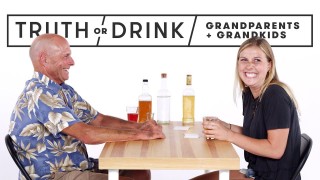Table of Contents
ToggleWhat Is The Sandwich Generation?
According to AARP (was originally called the American Association of Retired Persons, but changed to initials only in 1999), 10,000 Baby Boomers reach retirement age each day. What’s more, this trend is expected to continue into the 2030s. This means that over the next 22+ years, nearly seven Boomers will turn 65 years old every minute. As the elderly population grows and a new crop of young-adults struggle to gain financial footing, people who are ‘sandwiched’ between their aging parents and adult children join the ranks of, “the sandwich generation.” Emotionally, physically, and financially providing care for their own children and parents simultaneously, this generation accounts for 47 percent of adults in their 40’s and 50’s.
Sandwich Generation Demographics

- The term ‘sandwich generation’ was added to the Merriam-Webster Dictionary in 2006.
- Made up of everyone who has a parent aged 65 or older who is also raising a youngster or supporting a grown child.
- One in seven provide financial assistance to both their own parents and one or more children.
- The writer credited with having coined the term, Carol Abaya, has also defined two sub-groups:
- The Club Sandwich — Older adults in their 50 or 60s wedged between aging parents, adult children and possibly, grandchildren. Can also refer to younger adults in their 30s or 40s who have young kids, elderly parents and aging grandparents.
- Open Faced Sandwich — Anyone who is non-professionally involved in elder care, which is an estimated 25% of individuals (at some point in their lives).
The Sandwich Generation Stress Factors
The burdens associated with bearing financial responsibility for multiple generations are rising. This is due, in part, to the fact that 30 percent of 25-34-year-old kids live with their parents.
With more post-college youths coming home to live with parents or doing so throughout school, there are now estimates that almost 30 percent of 25 – 34-year-old adults reside with their parents. As a result, parents increasingly assume their children’s financial obligations as well as other responsibilities. Wherever their aged parents live, the stress of care taking for multiple generations can become overwhelming. Medical costs, assistance with activities of daily living, overseeing or actually providing supervision, and managing legal considerations exact an emotional and physical toll.
With so many stressors, members of the sandwich generation often experience caregiver burnout, which includes depression, guilt, and feelings of isolation. What’s more, they can face trouble managing their own work, hobbies, relationships, and self-care. In fact, 30 percent of caregivers are likely to die before the people they are caring for!
Stress Busting Tips for the Sandwiched
- Help financially-dependent adult children with job tips, advice, etc. and motivation to get them into their own place.
- Consider hiring full or part-time caregivers for your parents. Even a few hours of outside assistance can be a lifesaver when it comes to relieving caregiver stress.
- Set boundaries with each party you are helping financially by agreeing to provide them with a set amount of support each month or year, for pre-determined expenses. Resist the urge to leave the term open-ended.
- Maximize tax benefits. Children enrolled in higher education often qualify for tax breaks, and you might also be able to write off medical expenses related to caregiving.
- Maintain open communication with family members.
- Be kind to yourself! Take time to pamper yourself. Eat right. Get rest. Take time to do things that you enjoy. And don’t forget to laugh!
- Find ways to make your life as a caregiver easier. For instance, order a PillMap™ today! Designed out of necessity by a family who has several members taking numerous medications, PillMap™ is a companion to the traditional weekly pill container. Caregivers customize it once, placing a sample of the actual meds into compartments and noting beside each one the prescription name, dosage, frequency, and additional instructions.
















